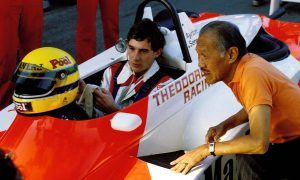
©F1i
STRONGER SUSPENSIONS
Jenson Button’s Formula One swansong was cut short with a broken suspension after the McLaren-Honda driver rode a kerb at Turn 9. This type of failure is quite rare since the engineers know exactly the constraints each component must be able to withstand.
On an F1 car, like on other single-seaters, the wheel connects to the chassis with two wishbones. A third arm activates the spring, torsion bars and other suspension elements, lodged within the monocoque. On the image of the MP4-31 above, one can spot both ends of the two wishbones (the lower one also houses the wheel tethers), the third arm, and the steering rod.
On 2017-spec cars, the tracks will be 200mm wider, which will lead to elongated wishbones and suspension arms. But with 20% more downforce expected, these parts will have to cope with far greater loads, and these will continue to increase as the season unfolds given the scope for aero development in the first year of every new set of regulations.
So engineers will have to assess in advance the levels of downforce for the end of 2017 in order to know how much load the parts will have to support before designing and calibrating these accordingly.
What’s more, the wishbones will also have a higher angle of incidence (going roughly from 5˚ to 10˚), thus making them more efficient aerodynamically.
Finally, it is worth noting that F1 suspensions improve mechanical grip in slow-speed corners, while also positioning the car at an optimal angle, aerodynamically speaking.






